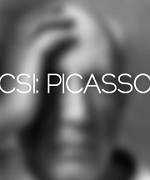An Interview with Conservation Scientist Dr. Francesca Casadio

Francesca Casadio PhD., joined the Art Institute of Chicago as its first A.W. Mellon Conservation Scientist in July 2003, filling a critical role in establishing and directing a conservation science program. Her primary activities focus on equipping an in-house laboratory with state-of-the-art instrumentation, and conducting analyses of works of art in the collections.
Q: What came first, your interest in chemistry or art? Or were you always interested in both?
A: I have always been interested in art. I was born and raised in Italy, so I was always surrounded by art. I also have a big interest in materials. I found a way of combining my interests in chemistry and art. After high school I had straight materials training, but my graduate work focused on Cultural Heritage and art.
Q: How do modern art forensic techniques differ from the investigative techniques employed in the past?
A: There were hardly any non-invasive techniques available, and in general the instrumentation required much larger samples, perhaps one-quarter-inch square—today we can use a sample the size of a grain of fine table salt. With a sample that size we can perform two or three analyses today. We can even reuse samples taken thirty years ago for current analysis.
Q: What are some of the things you’ve learned?
A: We get to know the man behind the artist, with Picasso we learn his story with the materials he uses, the layers of paint, it’s like a surgical time machine. This is what is fascinating. After the war, Picasso, some of the other artists were almost exclusively using locally sourced materials…it’s quite fascinating. We learn much more about the artist than by reading history books.
Francesca Casadio received her Ph.D. (2001) and M.S. degrees in Chemistry from the University of Milan, Italy with dissertation on the analytical investigation of synthetic polymers used in conservation of works of art and architecture and masters’ thesis focused on applications of Micro-Raman and FTIR spectroscopies to the investigation of pigments in polychrome works of art. Prior to her appointment to the Art Institute of Chicago, Dr. Casadio was research fellow in the Science Department at the Getty Conservation Institute, Los Angeles, then at the ICVBC – CNR (Italian National Council of Research) “Gino Bozza” in Milano. Dr. Casadio has published on numerous topics in the conservation science field, dealing with both movable and immovable Cultural Heritage.
An edited transcript